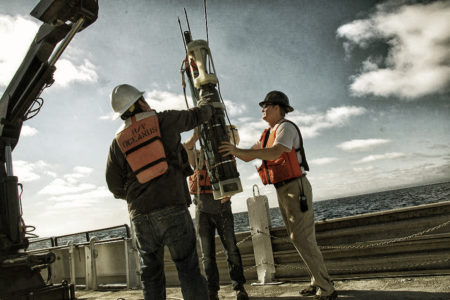 All robots are present and accounted for. The two Carbon Flux Explorers launched yesterday and the day before were recovered today, including CFE-Cal 2 with its experimental sample collection system.
All robots are present and accounted for. The two Carbon Flux Explorers launched yesterday and the day before were recovered today, including CFE-Cal 2 with its experimental sample collection system.
When the latter robot was inspected on deck, the researchers were initially disappointed to see that a tube meant to direct particles into the tray had become disconnected. If the separation occurred soon after its deployment, there would be no samples to show for its time at sea. Read More »
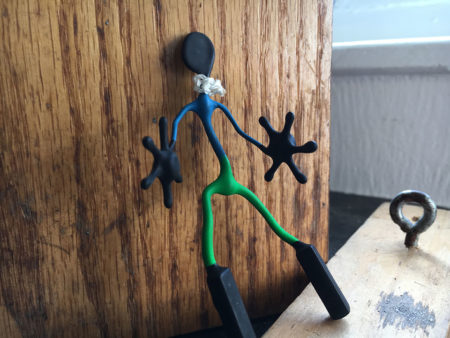 Meet the Gremlin. Several years ago, Jim Bishop found him in a toolkit that came with a box of new particulate inorganic carbon (PIC) sensors used on the CTD Rosette. The figurine was a joke, apparently added to the box of spare parts by the sensor manufacturers.
Meet the Gremlin. Several years ago, Jim Bishop found him in a toolkit that came with a box of new particulate inorganic carbon (PIC) sensors used on the CTD Rosette. The figurine was a joke, apparently added to the box of spare parts by the sensor manufacturers.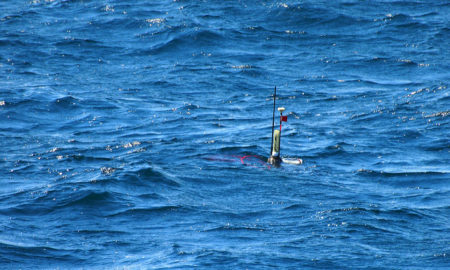 There’s a mixture of relief and joy every time a robotic float is recovered. Years of research and months of intense engineering go into preparing each device for its life at sea, no matter how brief the stint. So when Carbon Flux Explorer 3 sent its ping this afternoon to say that it had surfaced and completed its mission, a day after it was first dropped into the Santa Cruz Basin, the reaction was one of excitement and anticipation.
There’s a mixture of relief and joy every time a robotic float is recovered. Years of research and months of intense engineering go into preparing each device for its life at sea, no matter how brief the stint. So when Carbon Flux Explorer 3 sent its ping this afternoon to say that it had surfaced and completed its mission, a day after it was first dropped into the Santa Cruz Basin, the reaction was one of excitement and anticipation. 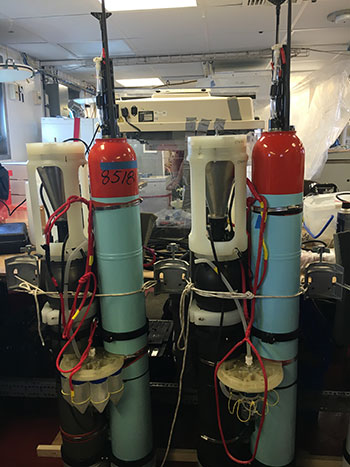 The ocean’s biological carbon pump occurs at very fast time scales, so it has been difficult to study the various environmental dynamics influencing its processes. Determining whether the carbon pump is strengthening or weakening – and why – would require ongoing monitoring that is impractical to do for humans on a ship.
The ocean’s biological carbon pump occurs at very fast time scales, so it has been difficult to study the various environmental dynamics influencing its processes. Determining whether the carbon pump is strengthening or weakening – and why – would require ongoing monitoring that is impractical to do for humans on a ship. 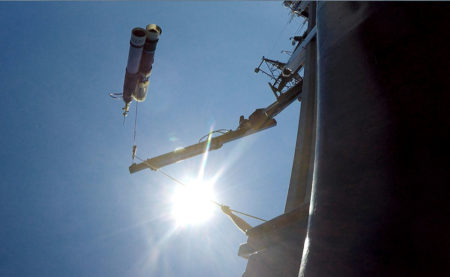 At 2:27 p.m. today, the first Carbon Flux Explorer was deployed, and if all goes well, we will see it again in about 24 hours. Its entry into the water did not come with the cheers I had expected. I was told that this was because many of the researchers had done this before, and there was still a great deal of work to do after the launch. (I still clapped.)
At 2:27 p.m. today, the first Carbon Flux Explorer was deployed, and if all goes well, we will see it again in about 24 hours. Its entry into the water did not come with the cheers I had expected. I was told that this was because many of the researchers had done this before, and there was still a great deal of work to do after the launch. (I still clapped.)